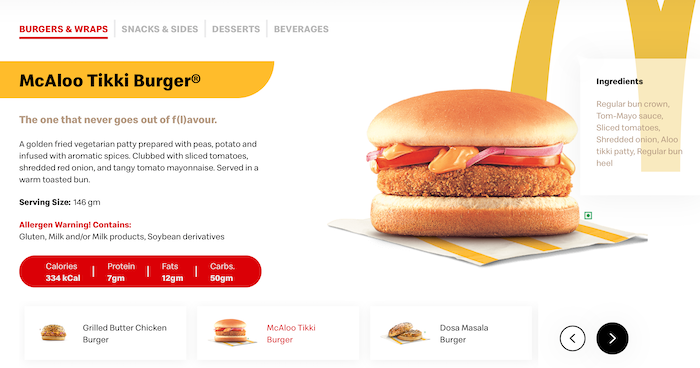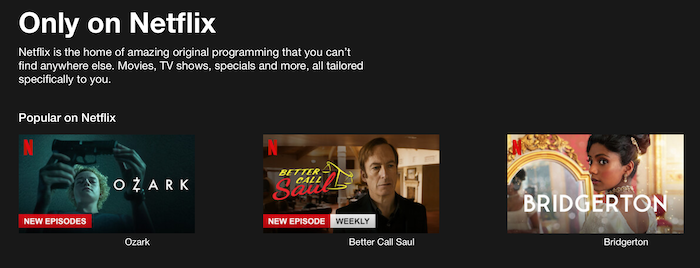
Your audience wants personalized marketing from your business.
In fact, they expect it. According to research, 71 percent of customers expect businesses to send them personalized marketing messages, and 76 percent are disappointed when they receive generic communications instead.
The challenge? If you don’t know your audience, you can’t send them personalized content. You don’t know what matters to them, so you can’t reach them on the right level.
If this dilemma sounds familiar, don’t worry. I have a solution for you, and it’s called customer segmentation. Customer segmentation helps you understand your audience so you can target your marketing campaigns with greater precision. Let me show you how it works.
What Is Customer Segmentation?
Customer segmentation means dividing customers into groups, or “segments,” based on traits they have in common such as age, buying habits, gender, and needs.
Businesses use customer segmentation models to better understand their prospects so they can target them with relevant personalized marketing campaigns including ads, emails, and social media posts.
Customer segmentation isn’t just about reaching a new audience more effectively, though. It’s also a way to reconnect with lapsed customers and encourage new purchases by sending them carefully targeted messages.
Remember, every customer is unique. They each have own buying behaviors and reasons for choosing you over your competitors. While it’s impossible to personalize your marketing to every individual, a customer segmentation strategy is the next best thing.
Why Is Customer Segmentation Important?
For one thing, it helps you improve your customer service. By understanding your customers’ needs and wants, you’re better placed to help solve their problems.
Does customer service matter? Absolutely. Research says one in five customers will abandon a brand after just one poor customer experience, so the more effort you invest in great service, the better.
Similarly, segmenting your audience helps build customer loyalty. How? Because customers are typically more loyal to brands offering personalized messaging—for 79 percent of consumers, the more personalization a company uses, the more loyal they are.
What do loyal and happy customers have in common? They’re more likely to shop with you. By personalizing the shopping experience through segmentation, you create more dedicated customers, so you increase conversions over time.
Not convinced? Well, studies show that over 60 percent of customers are likely to be repeat buyers after a personalized shopping experience, so the stats speak for themselves.
Customer Segmentation Models
You can use various customer segmentation models, depending on your business needs and marketing goals. Here’s a look at seven of the most common models.
1. Demographic Segmentation Model
Demographic segmentation means dividing people into groups based on certain demographic factors, including age, income, marital status, and occupation.
Let’s say your audience is men and women aged between 30 and 65. You want to run a TikTok campaign to promote a new product.
- 61 percent of TikTok users are women.
- 11 percent of users are over 50.
If you only run a campaign on TikTok, you miss out on a huge chunk of your target audience. Perform some demographic segmentation, and you’ll know to target Facebook, too, since 73 percent of 50- to 64-year-olds use this platform.
Want to try it?
- Set your campaign goal.
- Choose your variables, whether it’s age, gender, and so on.
- Select your platforms to run personalized marketing campaigns, such as social media, email, etc.
- Measure success using tools like Google Analytics and revise your campaigns as needed.
Pros and Cons of Demographic Segmentation
On the plus side, it’s easy to use this model, and it helps you adjust your tone to target different genders and ages.
The main downsides? You risk making false assumptions about a particular segment. You could also lose your brand voice by targeting such varied demographics.
Always use this customer segmentation model alongside other techniques. For example, it might be helpful to know a customer’s buying habits and values, or where they live.
2. Geographic Segmentation Model
With geographic segmentation, you categorize your audience based on where they work, live, and shop.
This type of customer segmentation analysis is fairly straightforward. The main disadvantage? Ironically, it’s simplicity. On its own, geographic segmentation doesn’t reveal much about your audience, but you can use it alongside other models on this list to build the fullest possible picture of your audience.
How to Segment Customers Through Geographic Segmentation
Here’s how to get started with geographical segmentation:
- Determine your segments. You can divide people by, for example, climate, culture, language, or land area.
- Gather data, such as website location data and sales data, to identify the size of your community.
- Send targeted messages to customers based on these segments. As an example, you might run paid ad campaigns based on location, or if you’re launching an exclusive location-based product, email your target audience a promo code.
Case Study: McDonald’s
McDonald’s frequently uses geographic segmentation to target different audiences around the world. For example, here’s a burger found in McDonald’s India:

McDonald’s creates products to suit its diverse audience and tap into the flavors and products they may respond to based on geography.
This brings me to another advantage of geographic segmentation: exclusivity. Since the McDonald’s menu varies by location, each item feels exclusive, harder to acquire, and more valuable, which may increase conversions.
3. Psychographic Segmentation
We each have unique personalities, but we share traits or characteristics. Psychographic segmentation means forming groups based on common traits such as hobbies, lifestyle choices, personality traits, cultural beliefs, and values.
Psychographic segmentation helps you understand a customer’s psyche so you can devise highly focused, relevant campaigns. However, the main challenge is gathering (and organizing) the relevant data.
How to Use Psychographic Segmentation
Follow these steps to start using psychographic segmentation:
- Determine your ideal customer. Who are you selling to? What do they love about your products? This stage may involve some consumer research.
- Choose your segments, such as hobbies, values, or personality traits.
- Identify where your audience congregates. For example, over 1.5 billion people visit Reddit every month, and 38 percent of Americans listen to podcasts every month.
- Perform some (more) consumer research. Whether you run Instagram polls or send surveys, ask your audience what type of content they want from you.
- Evaluate the data to decide how to properly target your groups.
Case Study: Patagonia
Patagonia, an outdoor clothing brand, knows its customers care about sustainable living. They’ve made sustainability a core part of their brand messaging:

If you ran a store like Patagonia, you could segment customers based on whether they prefer hiking or cycling and then send targeted campaigns to meet their needs while retaining this core brand message.
4. Technographic Segmentation
Technographic segmentation means categorizing people depending on the devices, hardware, and software they use. Why does this data matter? Well, according to statistics:
- 79 percent of U.S. smartphone users purchased something online through their mobile phone in the last six months.
- 40 percent of consumers switch to a competitor after one (yes, one) bad mobile phone experience.
- Purchases made on tablets are set to rise to over $64 billion in 2022.
As a marketer, you should care about how people are accessing your content so you can optimize their user experience (UX) and target them effectively. Technographic segmentation can help.
How to Perform Technographic Segmentation
There are a few ways to segment your audience using this method, but here’s how I suggest you start.
- Know your audience: Identify your customers, as they will determine which categories you choose.
- Pick your segments: For technographic segmentation, you might group people based on the devices they use, the software they’re working with, the apps they prefer, or how they use technology.
- Gather data: Collect the data you need to segment customers. You might do this by scraping websites, sending surveys, or even purchasing data from service providers.
Armed with this data, you can create your campaigns.
Example of a Technographic Segmentation Campaign
Let’s say you run a tech store. Some customers use Norton 360 for PCs. Others use Avast Security for Mac.
You split your marketing campaign by software. You send one email to Norton subscribers offering a discount on their annual subscription. You send another email to Avast customers offering the same discount for Avast.
The result? Emails that speak to your audience’s specific tech needs, which increase your chance of making conversions.
You could take it further, too. Say, through analytics, you notice your Norton PC customers are looking at mobile antivirus solutions. You could send them a discount code like this one from PCWorld:

By anticipating what matters to your audience based on their tech preferences, you’re meeting their needs…and hopefully nurturing them through to checkout.
Is this a perfect customer segmentation model? No. One significant drawback is its limitations: Knowing a customer’s tech preferences is only one part of what shapes their buyer’s journey. However, it’s a marketing technique worth adding to your toolbox.
5. Behavioral Segmentation
Want to know how your audience interacts with your business? Try behavioral segmentation.
Behavioral segmentation means grouping people together based on behavior patterns. These patterns reveal how consumers feel about your business so you can determine how to successfully reach them at every stage of the buyer’s journey.
As with other models, behavioral segmentation can be used at any point in your marketing strategy, whether it’s to revamp a landing page or send promotional emails.
How to Use Behavioral Segmentation
First, identify the behavior patterns to track. There are many ways to approach this, but you might segment customers based on their:
- buying stage
- engagement
- historical purchase history
- purchase frequency
- response to previous marketing campaigns
For example, say you group customers based on engagement. What counts as an “active” and “lapsed” customer varies depending on your business, but here are three groups you might have:
- Active customers shop with you every month.
- Infrequent customers only buy products every few months.
- Lapsed customers haven’t purchased from you in a year.
Next, you can devise three separate marketing campaigns. You might send active customers a loyalty discount, and infrequent customers a separate discount to tempt them back.
Once your campaigns are up and running, track your analytics. If you’re not getting the results you want, adjust your campaigns and try again.
Netflix and Behavioral Segmentation
With over 221 million subscribers, Netflix knows how to use behavioral segmentation to satisfy customer demand.
- Netflix uses machine learning to track what customers watch.
- The algorithms generated help Netflix customize everything for each customer, from the homepage to the show recommendations.
- Netflix can use A/B testing to track the impact of different recommendations and personalization features.

Behavioral segmentation has a significant downside, though: There’s always the chance you get the algorithms wrong. That said, if you track results diligently and respond to your findings, you can offset this drawback.
6. Needs-Based Segmentation
Successful marketing often comes down to showing prospects how your goods or services meet their needs. That’s where needs-based segmentation comes in.
With needs-based segmentation, you’re grouping people based on what they need from your product. The benefits they’re looking for when they buy something. What pain points they have, and the problems they need solving.
The biggest challenge? Identifying what these needs are.
For example, say you’re a food brand. Two prospects follow you on social media. One cares about fresh chicken, and the other wants vegan food. You might sell meat and non-meat products, but the same ad campaign won’t appeal to both.
Driving down into groups’ needs and motivations helps you maximize your campaigns.
Let’s do a simple comparison. Heck sells gluten-free vegan and non-vegan meat. They know some customers love the gym and care about high-protein snacks, so they launched a campaign to sell their meat at local gyms:

They know other customers care less about fitness and more about a vegan lifestyle, so they frequently create social media posts around meat-free products:

Heck clearly spent time learning about its wider customer base and what drives them so it can effectively reach every segment while retaining a consistent brand voice.
Here’s another example. Beauty store Revolution lets customers shop by skin concern and by ingredient to directly target consumers’ needs:

Needs-Based Segmentation Pros and Cons
Now that you understand how this customer segmentation model works, is it right for you?
Well, there are clear advantages. Needs-based segmentation helps you market with greater accuracy than, say, targeting groups by age or location. It’s comprehensive and effective, and it could help you build loyal customer relationships.
The main drawbacks? It’s challenging to identify the “right” needs to target, and if you don’t have accurate data, your campaigns may fail. What’s more, consumer needs evolve, so you’ll need to review your strategy regularly to maximize your campaign effectiveness.
How to Perform Needs-Based Segmentation
Here’s the simplest approach.
- Start with your products or services. Look at them from every angle and write down all their features and benefits.
- Build customer personas around these features. If you know how to segment customers based on behavior, age, location, etc., use the data you already have to help here.
- Finally, reach out to customers and learn what matters to them. You might, for example, look at product reviews, ask for customer testimonials, or send out questionnaires.
Once you have enough data, use your findings to create segmented marketing campaigns. Track your campaigns and tweak them as needed.
7. Value-Based Segmentation
The better you understand how much it costs to lose a certain client’s business, the better you can direct your marketing efforts. Value-based segmentation can help you by grouping customers together based on their value to your business.
Why group customers together this way? Well, there are two advantages.
Firstly, if you know which customers spend the most money on your products, then you know which customers you can’t afford to lose. You can direct resources into providing these customers with highly targeted campaigns and great customer service.
Secondly, you can identify your most loyal clients and how much it costs to retain their business. Once you know a customer’s relative value, you can decide if it’s worth retargeting these inactive customers with personalized messaging.
Is retention worth the effort, though? There’s evidence that it can be up to seven times more expensive to acquire rather than retain customers, so yes, retention matters.
Using Value-Based Segmentation
Here’s how to segment your customers on a value basis.
- Decide on your campaign goals. Maybe you want to identify your most lucrative audience and launch an ad campaign for your high-end products, or you want to nurture lapsed customers back to your store with enticing loyalty discounts.
- Identify your segmentation criteria. For value-based marketing, you might segment customers based on average spend or relationship duration as described above.
- Determine how you’ll target customers based on your findings; for example, on social media, by email, or through paid ads.
- Analyze your efforts such as by running regular A/B testing or asking customers for feedback.
On the plus side, value-based segmentation helps you quickly identify your most valuable customers in order to target them more effectively. However, if you’re a startup or young business, you may not have enough relevant data to use this customer model just yet.
Case Study: Global Cruise Company
Here’s an example of the basic value-based segmentation principles in action and how this method helps with retargeting and conversion.
Merkle, a marketing company, helped a global cruise company develop a value-based approach to their next marketing campaign.
The cruise company sent the same messages to every customer regardless of their lifetime value (LTV). To boost revenue, they wanted to segment customers based on their LTV to send tailored ads and emails.
The company broke down each customer’s total predicted economic value. Once they identified the highest-value and most loyal customers, they could better nurture them through the sales funnel with specific, smaller campaigns.
The results? Five percent of lapsed but loyal customers returned, and they shortened the purchase cycle by 24 percent. All it took was some focused, personalized messaging based on a customer’s relative value.
Customer Segmentation Frequently Asked Questions
What tools do I need to do customer segmentation?
You need data to segment customers effectively, so you’ll want analytics tools such as Google Analytics. You might also use dedicated customer segmentation software, depending on your budget and business goals.
Is customer segmentation worth it?
By segmenting your customers, you learn more about your target audience and what matters to them. The result is more effective marketing campaigns based on the unique needs of each segment within your broader audience base.
What type of campaigns does marketing segmentation work best with?
Segmentation works best on any channel when you’re using personalized ads aimed at certain people because you can run multiple smaller, highly targeted ad campaigns designed to deliver the right message to the right audiences.
How is customer segmentation used in customer retention?
Customer segmentation ensures your existing customers don’t feel overlooked. You can segment your loyal customers into smaller groups to deliver relevant, loyalty-based rewards that could help increase customer retention over time.
Conclusion: Customer Segmentation
If you’re trying to upgrade your marketing, customer segmentation is your friend. By segmenting your audience, you can learn what matters to your customers, run targeted, more effective campaigns, and ultimately convert more leads into customers over time.
Start by evaluating the customer segmentation models I’ve described and consider which combination works best for your business goals. If you need any guidance for choosing between customer segmentation types, though, check out my consulting services to discover how my team can help.
Have you created your customer segmentation strategy yet? Which model do you find works best?
from Neil Patel's Digital Marketing Blog https://ift.tt/eTfzMUQ

No comments:
Post a Comment